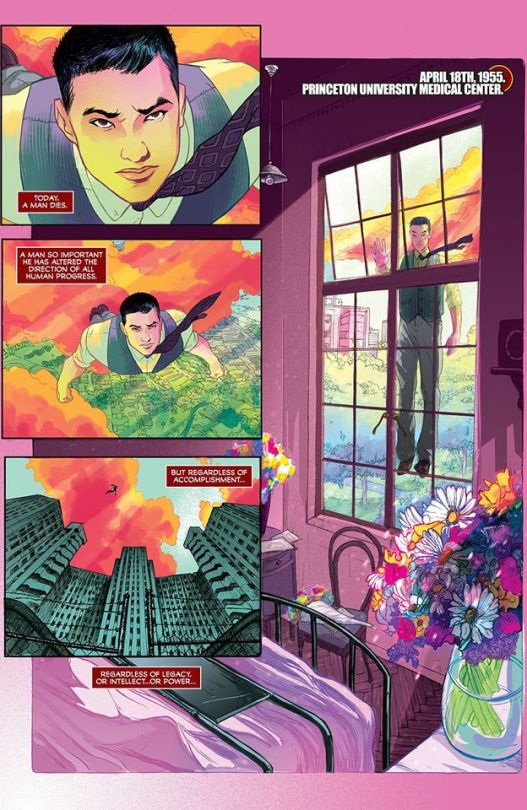Writer: Bobby Curnow
Artist: Simon Gane
Rating: 6 of 8
Ghost Tree #2

When you die, will you be happy with your life? Will it be a life well lived, or one filled with regrets? It makes sense that if you're happy with your life, you're more likely to be okay with it ending. In that case, you might be better able to move onto whatever afterlife awaits you. But if that's not the case, what happens then?
In shows like Bleach and Supernatural, you're likely to remain on the Earth as a spirit/ghost. That's what happens here, but it's relegated to one place: a forest in Japan. In the previous issue, Brandt returns to his childhood home and visits the ghost tree, fulfilling a promise he made to his grandfather, Jii-chan.
This isn't the only reason he's returned, as he tries to evade the trouble he's having in his marriage. This is alluded to in the previous issue, in a conversation he has with his cousin Mariko. Here, he goes into a bit more detail when he's talking to the spirit of former love, Arami.

Interestingly for a story featuring ghosts, so far none of them are violent and only one was a bit vengeful. Instead, the threat seems to be a demon, with Brandt's grandfather telling him they're either ''fascinated or infuriated by the living''. In the 1st issue, we meet a green cloaked, white masked figure and learn here that it's a Zero, a ghost charged with keeping the realm free of demons. When Jii-chan says 'this realm', I believe he means specifically that forest, but it could also mean the realm of the living.
So far, this is a good series and never overwhelms you with information, either about Brandt's life, or the forest. It's got some stunning art, with a very Japanese feel and I feel at ease looking at it. The issue drags a bit when Brandt returns to his grandmother's house and I feel his conversation with Arami could've been a little shorter. Similar to Brandt, I was pulled more into the supernatural world and what his grandfather had to say. If any of this sounds intriguing to you, then feel free to approach the ghost tree - but don't go alone...





